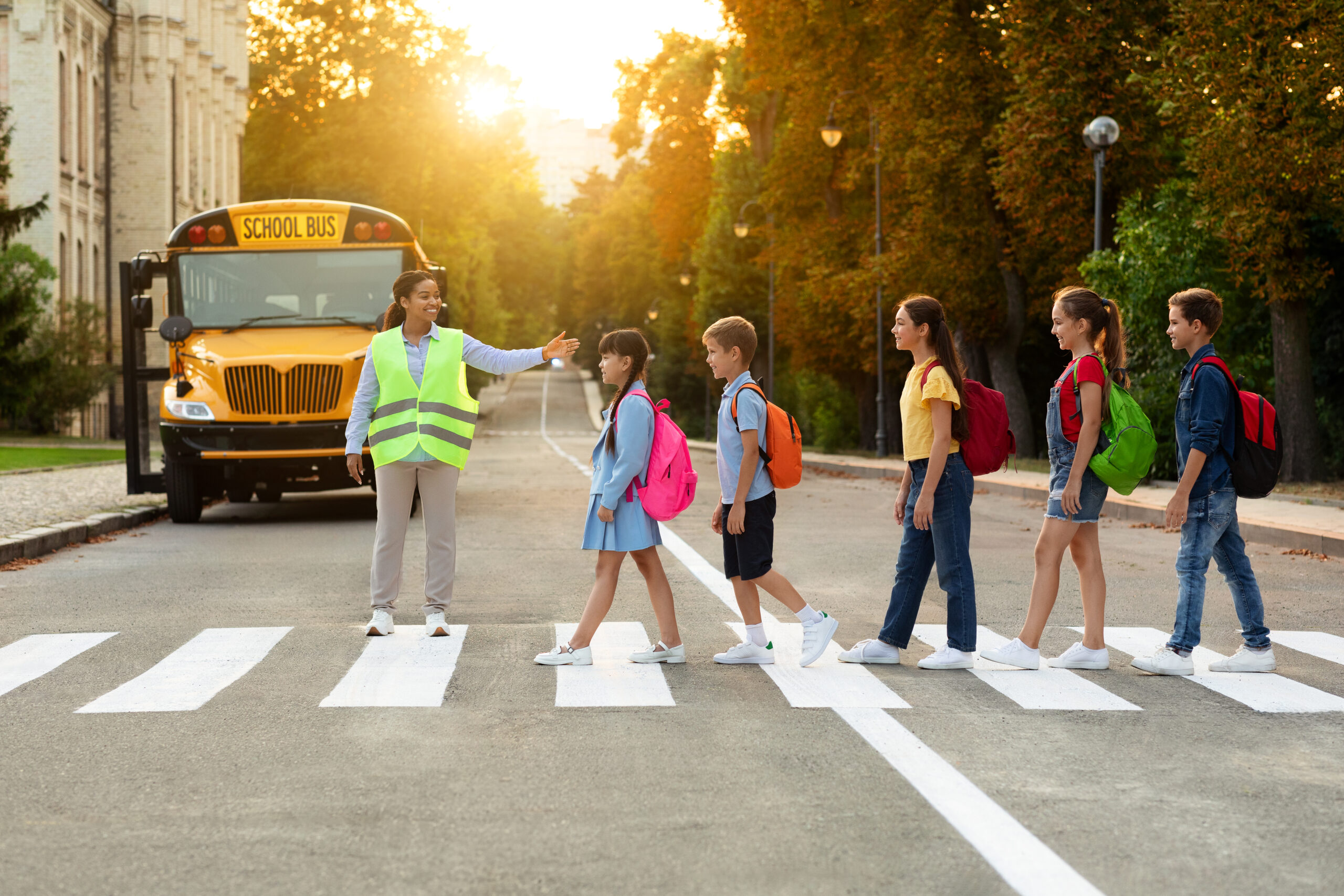What is Considered a School Zone in Maryland?
The Maryland Department of Transportation defines a school zone as a designated piece of roadway approaching, adjacent to, and extending beyond school buildings or grounds or along which school-related activities occur. The Department of Transportation has defined keywords and phrases to help better understand what encompasses a school zone.
- School: an accredited public, parochial, or private learning institution for one or more grades.
- School area: the area within a half mile of a school building or property and within which motor vehicle, pedestrian, or bicycle traffic is substantially generated or influenced by the school.
- Designated: the school zone is established by official action taken by the governing body owning the road segment and is appropriately signed in accordance with state and local law.
- School buildings or ground: school property that is routinely entered by school children directly from the road segment.
- School-related activities: Includes school children traveling to or from school on foot, bicycle, bus, or other vehicles entering or leaving school property, children being dropped off or picked up, or any combination that creates an unusual risk of injury to school children.
Are All Roads Within a Half Mile Considered to be in a School Zone?
A common misconception is that all roads within a half-mile radius of a school are considered to be in a school zone. However, before an area can be classified as a school zone, the local jurisdiction over the roadway must officially establish the area as a school zone before this designation may take effect.
What are the Speed Limits For School Zones in Maryland?
The State of Maryland enforces a 30-mile-per-hour speed limit for all school zones and 35 miles per hour for school zones with a crossing guard present. Speeding fines are doubled in school zones when the designated lights are flashing.
What is an Automated Speed Enforcement System?
An automated speed enforcement system, or ASE, uses a camera to detect and record vehicle information when excessive speeds are reached. This is similar to the methods law enforcement has typically used to obtain speed information. The ASE system removes the need for the physical presence of an officer, and instead, a citation is mailed to the offender’s residence. These systems have gained notable popularity and increased use in school zones to help maintain appropriate speeds and observe driver behavior. They are heavily used in areas with more traffic and provide consistent protection to school children, parents, personnel, and more.
Areas maintained under the ASE system have posted signs alerting motorists to their location. Maryland law restricts the recording of images obtained by this system in school zones to Monday through Friday, from 6 am to 8 pm, although each jurisdiction may set other times as needed. A citation issued through the ASE system will not exceed $40 and is considered a civil penalty, meaning no points are issued against a license.
What Do I Do if I Have an Accident in a School Zone?
If you are involved in a traffic accident in a school zone, you should take the following actions to ensure the protection of yourself and others:
- Prioritize safety: Ensure the immediate safety of all involved parties. Call for medical assistance for any injuries. Following a car accident, it is always a good idea to be cleared by a medical professional in case of hidden injuries such as internal bleeding or brain injuries. This will provide you with the necessary care and is a record of injury that may be used in court.
- Contact the police: Law enforcement should be notified for auto accidents involving injury, death, or damage, even when only minor damage has occurred. This will create an official and impartial record of the accident that is beneficial for insurance and court purposes.
- Gather information: Collect as much information as possible. Exchange contact details with all involved parties and witnesses, including name, contact number, and insurance information. Take pictures of the scene of the accident. This includes vehicle positions, damage to any involved vehicles, property damage, and relevant traffic signs or signals.
- Seek legal counsel: Contact an attorney at Tehrani Law, LLC, as soon as possible for help navigating the legal process following a school zone crash.
What are Important Safety Tips for Driving in School Zones?
School zone accidents can be avoided with standard, responsible driving practices. Some of those practices are:
- Strictly adhere to posted speed limits: Respect all posted speed limits within school zones. Speeds are typically reduced during school hours when children are present. This allows for a quicker reaction time for drivers to account for unpredictable children.
- Come to a complete stop: Always come to a complete stop, even at school zone entrances, when a sign is present. This will allow the driver to have ample time to evaluate any hazards.
- Avoid distractions: Cell phones, music, food, or other passengers can pose as a distraction while driving. Be aware of the road and its surroundings.
- Yield to pedestrians: Always yield the right of way to pedestrians, especially at crosswalks. Exercise added caution when children are present.
- Stay patient: Excessive traffic congestion is expected during pick-up and drop-off times in school zones. Stay calm and plan ahead to account for this delay. Avoid aggressive driving behavior.
Do I Need An Attorney?
The counsel of an attorney following an accident is always in your best interest. When an accident occurs in a school zone, you need Tehrani Law, LLC on your side. Call us today at 301-973-6510 or fill out a contact form for a free consultation.

 301-973-6510
301-973-6510 Email Us Now
Email Us Now




